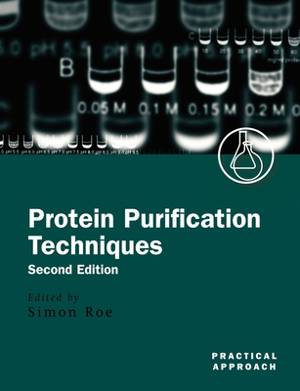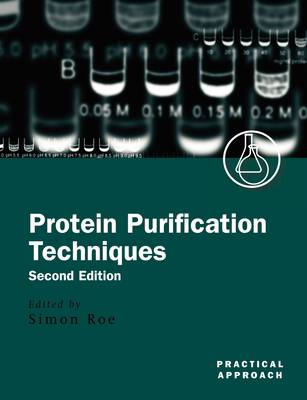
- Afhalen na 1 uur in een winkel met voorraad
- Gratis thuislevering in België vanaf € 30
- Ruim aanbod met 7 miljoen producten
- Afhalen na 1 uur in een winkel met voorraad
- Gratis thuislevering in België vanaf € 30
- Ruim aanbod met 7 miljoen producten
Zoeken
Protein Purification Techniques
A Practical Approach
€ 114,45
+ 228 punten
Omschrijving
Proteins are an integral part of molecular and cellular structure and function and are probably the most purified type of biological molecule. In order to elucidate the structure and function of any protein it is first necessary to purify it. Protein purification techniques have evolved over the past ten years with improvements in equipment control, automation, and separation materials, and the introduction of new techniques such as affinity membranes and expanded beds. These developments have reduced the workload involved in protein purification, but there is still a need to consider how unit operations linked together to form a purification strategy, which can be scaled up if necessary. The two Practical Approach books on protein purification have therefore been thoroughly updated and rewritten where necessary. The core of both books is the provision of detailed practical guidelines aimed particularly at laboratory scale purification. Information on scale-up considerations is given where appropriate. The books are not comprehensive but do cover the major laboratory techniques and common sources of protein. Protein Purification Techniques focuses on unit operations and analytical techniques. It starts with an overview of purification strategy and then covers initial extraction and clarification techniques. The rest of the book concentrates on different purification methods with the emphasis being on chromatography. The final chapter considers general scale-up considerations. Protein Purification Applications describes purification strategies from common sources: mammalian cell culture, microbial cell culture, milk, animal tissue, and plant tissue. It also includes chapters on purification of inclusion bodies, fusion proteins, and purification for crystallography. A purification strategy that can produce a highly pure single protein from a crude mixture of proteins, carbohydrates, lipids, and cell debris to is a work of art to be admired. These books (available individually or as a set)are designed to give the laboratory worker the information needed to undertake the challenge of designing such a strategy.
Specificaties
Betrokkenen
- Uitgeverij:
Inhoud
- Aantal bladzijden:
- 278
- Taal:
- Engels
- Reeks:
- Reeksnummer:
- nr. 244
Eigenschappen
- Productcode (EAN):
- 9780199636730
- Verschijningsdatum:
- 5/04/2001
- Uitvoering:
- Paperback
- Formaat:
- Trade paperback (VS)
- Afmetingen:
- 192 mm x 250 mm
- Gewicht:
- 503 g

Alleen bij Standaard Boekhandel
+ 228 punten op je klantenkaart van Standaard Boekhandel
Beoordelingen
We publiceren alleen reviews die voldoen aan de voorwaarden voor reviews. Bekijk onze voorwaarden voor reviews.







